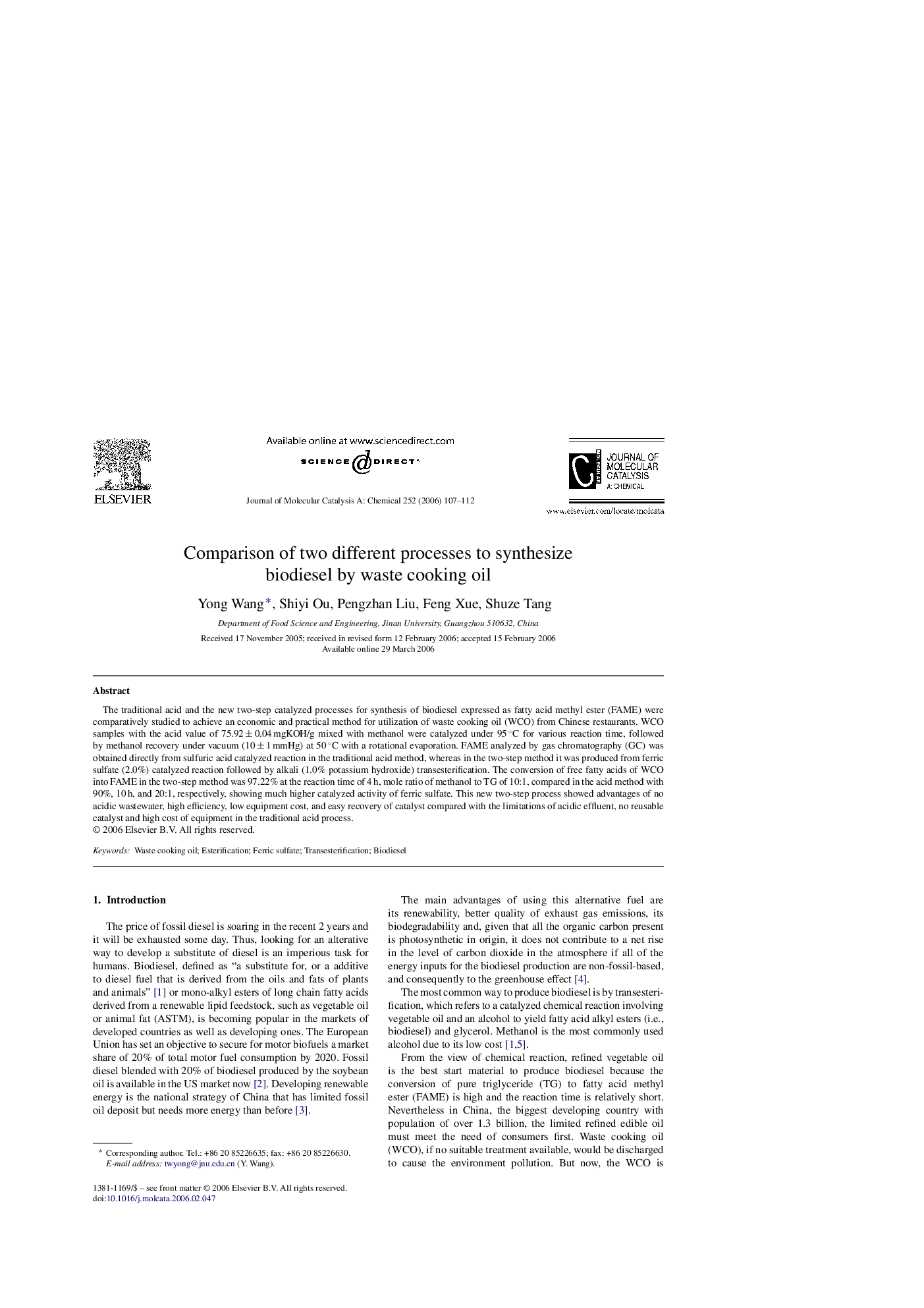| Article ID | Journal | Published Year | Pages | File Type |
|---|---|---|---|---|
| 68976 | Journal of Molecular Catalysis A: Chemical | 2006 | 6 Pages |
The traditional acid and the new two-step catalyzed processes for synthesis of biodiesel expressed as fatty acid methyl ester (FAME) were comparatively studied to achieve an economic and practical method for utilization of waste cooking oil (WCO) from Chinese restaurants. WCO samples with the acid value of 75.92 ± 0.04 mgKOH/g mixed with methanol were catalyzed under 95 °C for various reaction time, followed by methanol recovery under vacuum (10 ± 1 mmHg) at 50 °C with a rotational evaporation. FAME analyzed by gas chromatography (GC) was obtained directly from sulfuric acid catalyzed reaction in the traditional acid method, whereas in the two-step method it was produced from ferric sulfate (2.0%) catalyzed reaction followed by alkali (1.0% potassium hydroxide) transesterification. The conversion of free fatty acids of WCO into FAME in the two-step method was 97.22% at the reaction time of 4 h, mole ratio of methanol to TG of 10:1, compared in the acid method with 90%, 10 h, and 20:1, respectively, showing much higher catalyzed activity of ferric sulfate. This new two-step process showed advantages of no acidic wastewater, high efficiency, low equipment cost, and easy recovery of catalyst compared with the limitations of acidic effluent, no reusable catalyst and high cost of equipment in the traditional acid process.
Graphical abstractIn this work, a comparative study on preparation of biodiesel by the waste cooking oil (WCO) by two different processes was conducted. One process was traditional acid catalyzed one, in which the synthesis of biodiesel was catalyzed by sulfur acid, but the other process was a new two-step catalyzed one. Figure optionsDownload full-size imageDownload high-quality image (85 K)Download as PowerPoint slide
